Standing on the foundation of "Seeking the Dao of the Universe," Bombie represents an evolution towards the Web3 era.
Author: Deep Tide TechFlow
For a long time, many Crypto players have believed that games are the closest yet farthest track from Web2.
Close, because with over 3.4 billion global players, games are one of the most promising entry points for Web3 to introduce a billion incremental users;
Far, because when Web3 games deviate from the original intention of Play and focus solely on unsustainable Earn, they fall short in experience, user volume, and willingness to pay compared to Web2 games.
This is a huge gap, and as the global user count of the blockchain casual game Bombie surpasses 11.1 million, with total revenue exceeding 20 million dollars, we seem to be witnessing the bridging of this gap.
As the countdown to Bombie's TGE begins, and with the upcoming launch of the new Bombie ecosystem project CapyBomb, we had the privilege of engaging in an in-depth conversation with Barry Lau, COO of Bombie Foundation.
As another idle game deeply rooted in social platforms, many players view Bombie as a perfect tribute to the super dark horse of WeChat mini-games, "Seeking the Dao of the Universe." In response, Barry stated:
The Social + Game model captures the two key elements that allow mini-games to break through quickly: traffic and interaction. Standing on the foundation of "Seeking the Dao of the Universe," Bombie represents an evolution towards the Web3 era.
Of course, when discussing Web3 games, one cannot avoid the ultimate question of "how to balance playability and profitability."
The community often discusses Bombie's enviable ARPPU (Average Revenue Per Paying User) data: up to 319 dollars in the Kaia ecosystem and up to 804 dollars in the Japanese market. Why are players particularly keen to spend money in Bombie?
At the same time, CapyBomb has recently announced its IAS (In-App Staking) mechanism and various earning gameplay options.
When faced with the question of how to avoid being a flash in the pan and achieve sustainability, Barry's attitude is even more resolute:
From the very beginning of our design, we had a clear understanding: first, we must ensure that the game itself is fun; second, we want the earnings to be a natural extension. CapyBomb is not simply a choice between "Play" and "Earn," but truly pursues a dual sustainability of experience and earnings.
In this issue, let us follow Barry's insights into Bombie's user base of tens of millions, the secrets behind its top revenue on both Telegram and LINE platforms, and the new growth curve empowered by the new game CapyBomb.
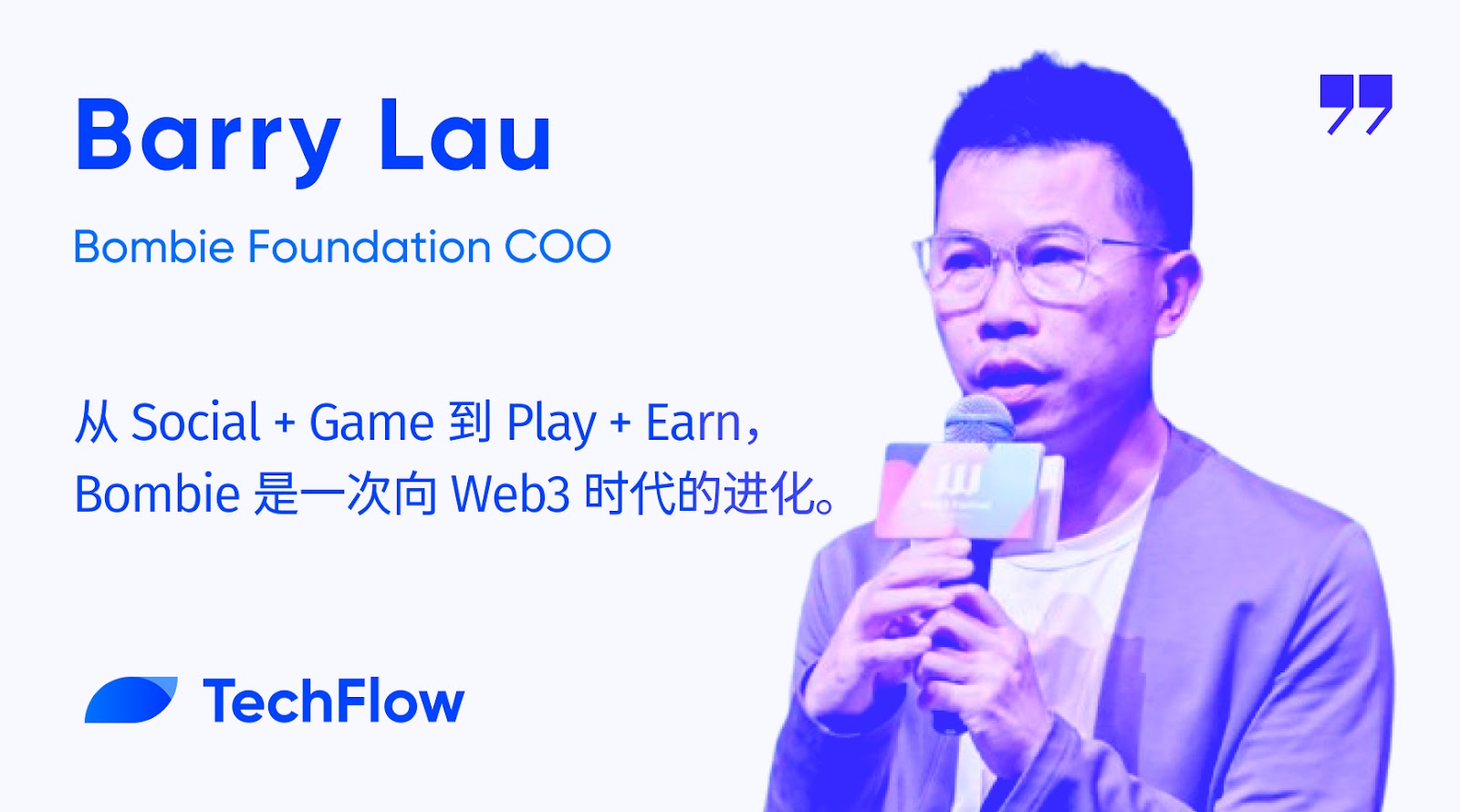
Social + Game is the Key to Breaking Through, Creating a Dual Revenue King on TG and LINE
Deep Tide TechFlow: It’s a pleasure to have the opportunity for an in-depth conversation with you. First, could you please introduce yourself (sharing some of your past educational experiences, work/startup experiences, and what led you to join Bombie)?
Barry:
Hello everyone, I am Barry Lau, COO of Bombie Foundation. I am very glad to have this opportunity to engage in deep communication with you all.
I started my career in 2000 at Yahoo! as a product manager, which means I entered the internet industry during the Web1.0 era. In 2009, I ventured into game publishing on social platforms, officially transitioning to Web2.0. Later, my company went public on the KOSDAQ in South Korea in 2016, and in 2020, I led a team to acquire a mobile game development company and successfully relisted.
After exiting in 2022, I began exploring Web3, wanting to combine my years of gaming experience with GameFi. At that time, I discovered that combining the already successful mini-game model on WeChat with Web3 technology and economic models, allowing players to truly own game assets, was a very promising direction.
I later found my current team and started the Bombie project in mid-last year.
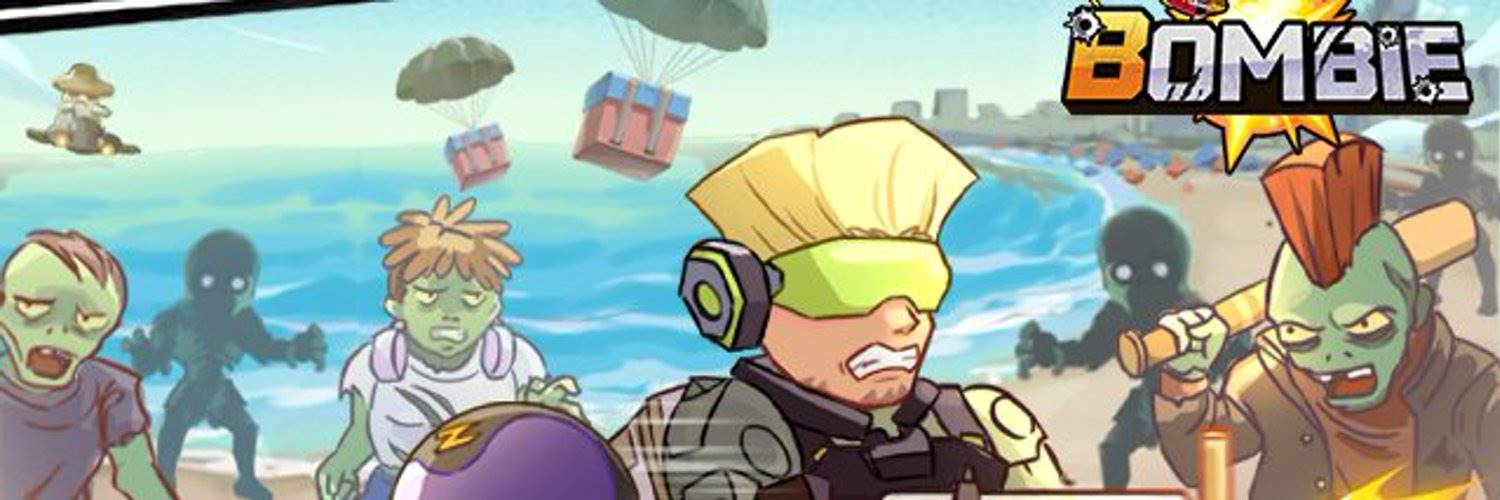
Deep Tide TechFlow: Many people say Bombie is the Web3 version of "Seeking the Dao of the Universe." What do you think are the similarities and differences between Bombie and "Seeking the Dao of the Universe"?
Barry:
Indeed, many people compare Bombie to "Seeking the Dao of the Universe," which is understandable because the two games share some similarities in gameplay. For example, Bombie also adopts the lightweight loop gameplay of "opening boxes to upgrade" and "endless monster fighting," emphasizing low barriers to entry, high accessibility, and a strong sense of achievement, which aligns well with the current trend of users seeking relaxed entertainment.
However, Bombie is not just a simple replica. We have introduced Web3 elements into the basic gameplay, such as airdrop rewards, asset on-chain, and a token economic system, allowing players to enjoy the fun of the game while truly owning the assets they accumulate in the game.
At the same time, we have made many new explorations in overall content updates, incentive mechanisms, and cross-platform (such as Telegram and LINE) layouts, aiming to allow players to play easily while also gaining tangible value returns in the process.
In short, Bombie is an evolution towards the Web3 era built on the foundation of "Seeking the Dao of the Universe."
Deep Tide TechFlow: With millions of players, why do you think casual mini-games like Bombie are more likely to succeed compared to AAA game titles like "Black Myth: Wukong"?
Barry:
I believe the core reason lies in "user threshold" and "scale effect."
AAA games like "Black Myth: Wukong" are excellent in terms of production precision and depth of worldview, but they often require players to invest a lot of time, energy, and equipment to fully experience. This model naturally suits a portion of deep players, but for a larger scale of casual users, the entry barrier is still relatively high.
Bombie, on the other hand, focuses on "lightweight" and "low-threshold" casual experiences. Users can start playing anytime and anywhere with zero learning cost, without needing to invest long periods continuously, and without significant cognitive pressure. This characteristic is very suitable for the fragmented usage scenarios of the mobile internet era and aligns with the usage habits of users on IM platforms like LINE and Telegram.
Additionally, lightweight games are inherently easier to spread quickly through social virality and invitation rewards, creating a scale effect. Once a certain user base is reached, growth can be very rapid, which is also a key reason why Bombie has gathered millions of users in a short time.
Deep Tide TechFlow: Just as "Seeking the Dao of the Universe" achieved great success relying on WeChat traffic, Bombie is rooted in the two major social platforms of Telegram and LINE, radiating to the global market and attracting millions of players' attention from the start. Do you think this Social + Game model is the key to breaking through for mini-games?
Barry:
I absolutely believe so. The Social + Game model captures the two key elements that allow mini-games to break through quickly: traffic and interaction.
For instance, "Seeking the Dao of the Universe" relies on WeChat, a massive social traffic platform, which allows users to seamlessly engage with the game during chatting and socializing, significantly reducing customer acquisition costs and barriers to dissemination. Bombie operates on the same logic, choosing to lay out on the two major instant messaging platforms, LINE and Telegram, which connects a vast global user base while fully utilizing social relationship chains to help game content spread naturally.
More importantly, the usage scenarios of social platforms are inherently fragmented, perfectly matching the casual, fast-paced, and easily start-and-stop experience of mini-games. This natural match makes it easier for mini-games to reach a wide audience and create viral growth effects.
Therefore, from Bombie's practical validation, the Social + Game model is not only the key to breaking through but also an important direction for the sustained growth of mini-games in Web3 and the global market.
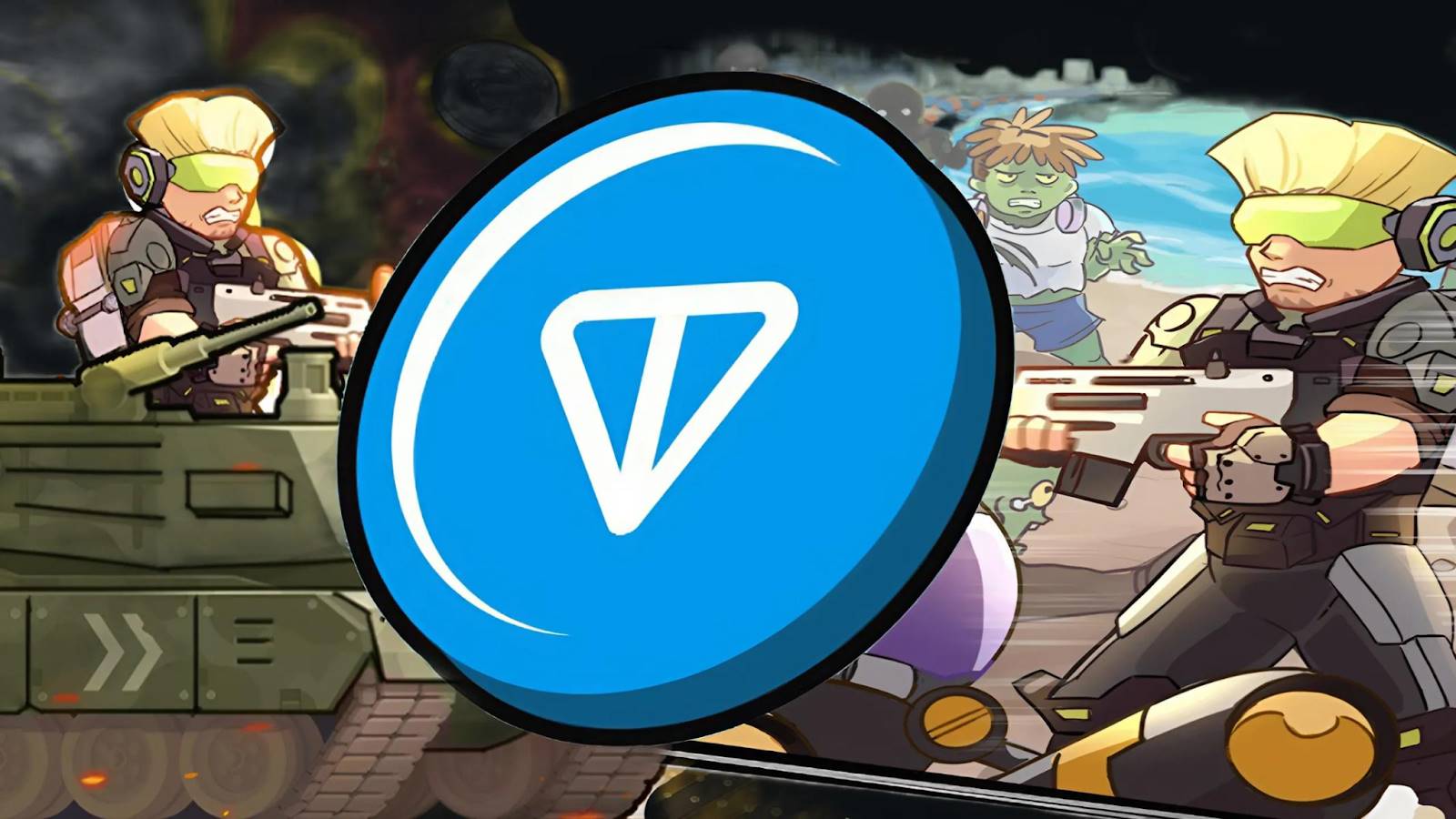
Deep Tide TechFlow: Facing the layers of challenges in the game, how does Bombie avoid the monotony of the upgrade and monster-fighting process, continuously stimulating players to produce endorphins, thus attracting long-term retention?
Barry:
This is a very good question. Bombie places particular emphasis on how to keep players feeling fresh and maintain a continuous sense of achievement during the upgrade and monster-fighting process to avoid monotony.
First, we adopt a "random drop + instant reward" mechanism, such as opening treasure chests and defeating enemies to drop items. These random little surprises can continuously stimulate the secretion of endorphins in players, making every game session full of anticipation.
Secondly, after each level-up in Bombie, we gradually increase rewards and token output. Players see tangible growth in their earnings after defeating each level, and this intuitive positive feedback can continuously reinforce their sense of investment and motivation.
At the same time, we regularly launch new content updates and special events, such as limited-time challenges, themed levels, and additional airdrops, continuously bringing new experiences to players and increasing the freshness and activity of the game.
Overall, Bombie aims to ensure that players can gain visible progress and rewards with every upgrade and every monster fight, while maintaining long-term user enthusiasm and retention through continuous updates and enriched gameplay.
Deep Tide TechFlow: As the top-grossing game on Telegram and LINE, why are users more willing to spend money in Bombie compared to other Web3 mini-games?
Barry:
I believe the key lies in three aspects: experience, value, and trust.
First is the experience. Bombie is essentially a fun and engaging game that provides a continuous sense of achievement. As players engage in monster fighting, opening treasure chests, and leveling up, they naturally develop a desire to accelerate their growth. Through moderate spending, they can significantly enhance their growth speed, bringing immediate satisfaction and fulfillment. This willingness to pay is smooth and spontaneous.
The second aspect is the sense of value. Bombie adopts a real Token reward system, allowing players to continuously accumulate $BOMBIE tokens through their gameplay while enhancing their experience through payments, creating a positive cycle of "having fun and earning real rewards." More importantly, players have high expectations of trust regarding future Bombie token airdrops, which further enhances their confidence in making payments.
Finally, there is the sense of trust. Bombie is also a star project officially supported by both Telegram and LINE, gaining a wealth of official activity resources and exposure opportunities. This official support from the platform not only proves Bombie's compliance and potential in product and operations but also significantly boosts players' trust in the game's stability and sustainability, making them more willing to invest time and money in the game.
Deep Tide TechFlow: Many paid games may face the issue of "paying players dominating the economy while free players churn." How does Bombie achieve a balance between paying and free players?
Barry:
This has been a crucial issue we focused on during the early design of Bombie. We believe that to achieve a healthy balance between paying and free players, the core is to implement "tiered incentives" and "everyone enjoys their own fun."
First, in Bombie, free players can completely earn $BOMBIE tokens and various rewards through daily monster fighting, completing tasks, and participating in events, having a stable growth path. Even without spending money, they can still enjoy the experience of continuous upgrades and a sense of achievement.
Secondly, the payments from paying players mainly manifest in accelerated growth and acquiring rare resources, such as faster upgrades and more efficient battles, but do not disrupt overall fairness. Spending can make the experience smoother, but it does not allow them to directly "crush" free players, ensuring the overall ecosystem's health and playability.
Additionally, we promote positive interactions between free and paying players through social invitation rewards, arena matching mechanisms, and level challenges, rather than simple opposition. Free players can also achieve good rewards and a sense of growth through their activity and participation.
In short, Bombie aims to build a "paying players experience faster, free players experience longer" positive cycle where both can enjoy fun and rewards.
Deep Tide TechFlow: Successfully breaking free from the fate of most Web3 mini-games being "a flash in the pan," besides the advantages mentioned above, what do you think you and your team have done right?
Barry:
I believe that in addition to the previously mentioned product positioning and platform strategy, there are several key points that are important reasons for Bombie's sustained and stable development.
First, the adherence to a "long-term operational mindset." From the very beginning, we did not treat Bombie as a one-time project but designed it with a rhythm suitable for long-term operation, including the sustainability of the token economic model, the planned content updates, and the stability of event rhythms, avoiding many of the issues that Web3 mini-games face in being short-lived.
Second, our investment in game experience. Although Bombie incorporates Web3 elements, we always prioritize user experience, lowering the entry barrier, simplifying gameplay understanding, while also considering the reasonable expectations of Web3 players for real asset returns. This design allows players from different backgrounds to find suitable ways to participate without being deterred by complex financial logic.
Third, the effective extension of existing successful experiences. The basic gameplay system of Bombie has already been market-validated within the WeChat ecosystem, proving the adaptability of lightweight, closed-loop, and highly engaging designs on high-traffic platforms. As new social ecosystems, Telegram and LINE also possess similar user characteristics and usage scenarios, so we are confident in extending this model to a larger international market.
Finally, close collaboration with platform partners. Bombie has not only received traffic support on Telegram and LINE but has also participated in official activities multiple times. This deep cooperative relationship has helped us establish a strong brand credibility and user trust foundation early on.
Overall, Bombie's ability to sustain development is attributed to our solid game product foundation and our understanding of the real needs of different user groups in the Web3 environment, finding a relatively natural balance between experience and rewards.
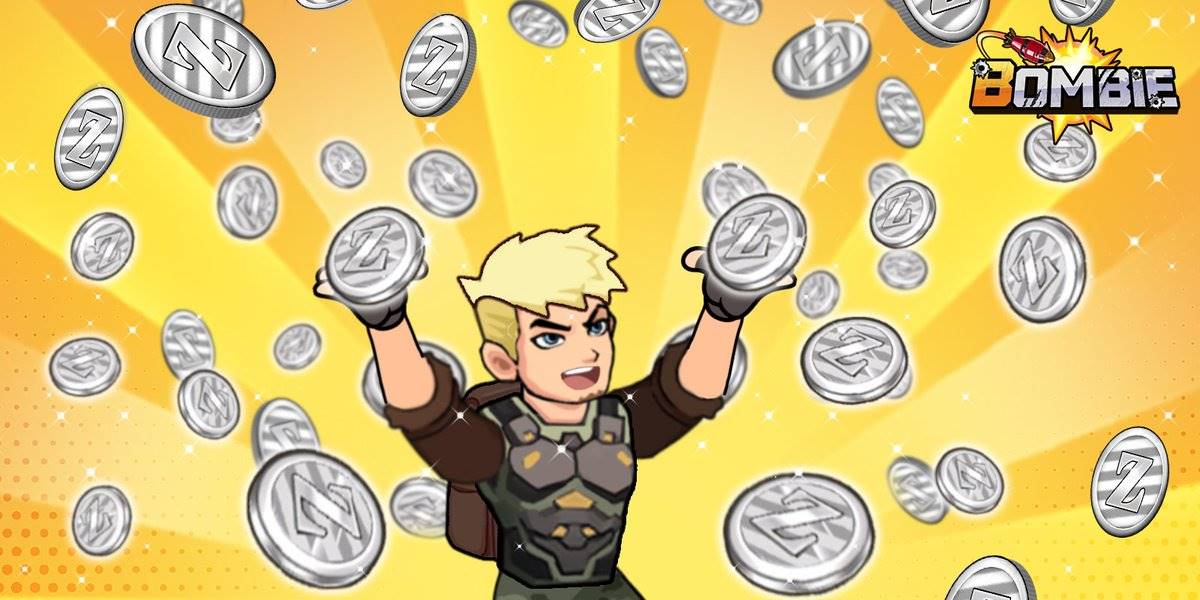
New Game CapyBomb: A New Growth Curve
Deep Tide TechFlow: As a new work in the Bombie ecosystem, what kind of game is CapyBomb?
Barry:
CapyBomb continues the basic experience of Bombie's easy-to-learn, lightweight monster fighting gameplay while incorporating more cute and fun elements, such as the widely popular Capybara character, making the overall art style more approachable and suitable for a broader user base.
More importantly, CapyBomb introduces a brand new "Stake-to-Earn" mechanism. Players can unlock more additional rewards in the game by staking $BOMBIE tokens, such as rare equipment, exclusive items, and additional airdrop opportunities. This design not only strengthens users' motivation to hold BOMBIE tokens but also allows players to gradually learn and engage with the staking logic of Web3 in a simple and understandable way.
Overall, CapyBomb is not only a content upgrade for the Bombie ecosystem but also a systematic iteration on gameplay and economic models aimed at user education and long-term retention.
Deep Tide TechFlow: Was there any special consideration in choosing the "Capybara" as the main character of the game?
Barry:
We chose the "Capybara" as the main character of CapyBomb after careful consideration. There are several reasons:
First, Capybaras are very popular worldwide. They have a strong affinity among young user groups with their cute, gentle, and healing image, especially on social media, where Capybaras have become a representative "healing IP," quickly breaking down barriers of age and cultural background, helping the game establish emotional connections more easily on a global scale.
Secondly, from a product design perspective, Bombie itself is centered around a relaxed, low-threshold, and high-achievement experience. The Capybara, as an animal that naturally embodies a "slow-paced, relaxed atmosphere," aligns very well with our overall product positioning. It can further enhance players' experiences of relaxation, healing, and continuous rewards in the game.
Finally, collaborating with the original development team of "Capybara Go!" is also our way of leveraging existing well-known IP resources to help CapyBomb have stronger topicality and brand recognition right from its launch, accelerating the resolution of the traditional Web3 mini-games' common cold start problem.
Deep Tide TechFlow: How does the IAS (In-App Staking) mechanism empower CapyBomb players?
Barry:
The IAS (In-App Staking) mechanism introduced in CapyBomb is an innovative upgrade of traditional Web3 staking gameplay, specifically tailored for game players.
Specifically, players can directly stake the airdrop rewards ($BOMBIE tokens) they earn in the main Bombie game into CapyBomb without needing to recharge or consume other assets. This staking behavior allows for low-cost participation and unlocks rare game items, special bonus rewards, and even other additional assets without extra payments, greatly improving players' growth efficiency and gaming experience.
The IAS mechanism brings several clear advantages to players:
It effectively reduces the immediate selling pressure of tokens in the market, as players are more motivated to continue using the tokens in the game rather than selling them directly.
It establishes a truly "closed-loop game economic system," allowing tokens to circulate within the game, enhancing ecological stability.
For players, the participation threshold is low, requiring no large investments to continuously enjoy additional rewards, reducing the psychological burden of participating in Web3 games.
At the same time, the IAS mechanism helps alleviate the common "peak at launch" phenomenon in the TON ecosystem, making Bombie's overall economic system healthier and more sustainable.
In summary, IAS is not just a simple staking entry; it deeply integrates staking with the daily gaming experience, allowing players to enjoy entertainment while truly understanding and participating in the value system of Web3.
Deep Tide TechFlow: The "one fish, multiple eats" gameplay is also highly anticipated. What dimensions of rewards can players obtain in the CapyBomb game?
Barry:
In CapyBomb, we have specially designed the "one fish, multiple eats" gameplay mechanism to allow players to earn rewards from multiple dimensions while participating in the game, rather than just a single token reward. The main aspects include:
First dimension, basic token rewards. Players can continuously earn additional rewards in CapyBomb through the $BOMBIE tokens they stake in Bombie, creating a secondary value utilization of the tokens.
Second dimension, rare game item rewards. By staking through IAS, players can unlock rare equipment, limited skins, special functional items, and other scarce resources, further enhancing their gaming experience and combat power.
Third dimension, ecological reward opportunities. As the Bombie and CapyBomb ecosystems expand in the future, staking behavior may earn additional airdrop qualifications and cross-game asset exchange opportunities, further enhancing the liquidity and potential value of assets.
Fourth dimension, asset value management. By circulating tokens within the game, players are effectively participating in the economic construction of the entire Bombie ecosystem, indirectly helping stabilize the value of the tokens they hold while avoiding the rapid price decline issues common in traditional GameFi projects.
In short, CapyBomb's "one fish, multiple eats" mechanism allows players to accumulate asset value and a sense of achievement in multiple layers and paths while having fun, enhancing the overall participation experience.
Deep Tide TechFlow: Many people debate whether blockchain games should focus more on "Play" or "Earn." With the attraction of high returns, how does CapyBomb balance playability and profitability to achieve sustainable development?
Barry:
Regarding the balance between "Play" and "Earn," we had a very clear understanding when designing CapyBomb.
We believe that to achieve sustainable development, two points must be ensured: first, the game itself must be fun; second, earnings should be a natural extension rather than the sole goal.
In CapyBomb, we first ensure that the basic gameplay is easy and fun, such as the introduction of the Capybara character, the thrill of monster fighting, and the surprise of random treasure drops. These elements are purely designed from the perspective of "making the game enjoyable." Even if players are completely indifferent to earnings, they can still enjoy a complete growth experience.
At the same time, in terms of earnings design, we introduced the IAS (In-App Staking) mechanism, allowing players to naturally obtain rare items, additional rewards, and future airdrop qualifications by staking $BOMBIE tokens. The logic here is that "the deeper the participation, the greater the rewards," but it will not disrupt the normal gameplay rhythm of regular players, avoiding the issue of attracting short-term speculators solely through high returns, which could lead to ecological imbalance.
More importantly, through low-threshold and low-burden design, CapyBomb treats earnings as an "incremental incentive" to reward players for their long-term participation, rather than allowing economic returns to overshadow the game itself from the very beginning.
In summary, CapyBomb is not simply about choosing between "Play" and "Earn," but rather integrates Earn naturally into the long-term experience through engaging gameplay, truly achieving a sustainable balance between experience and rewards.
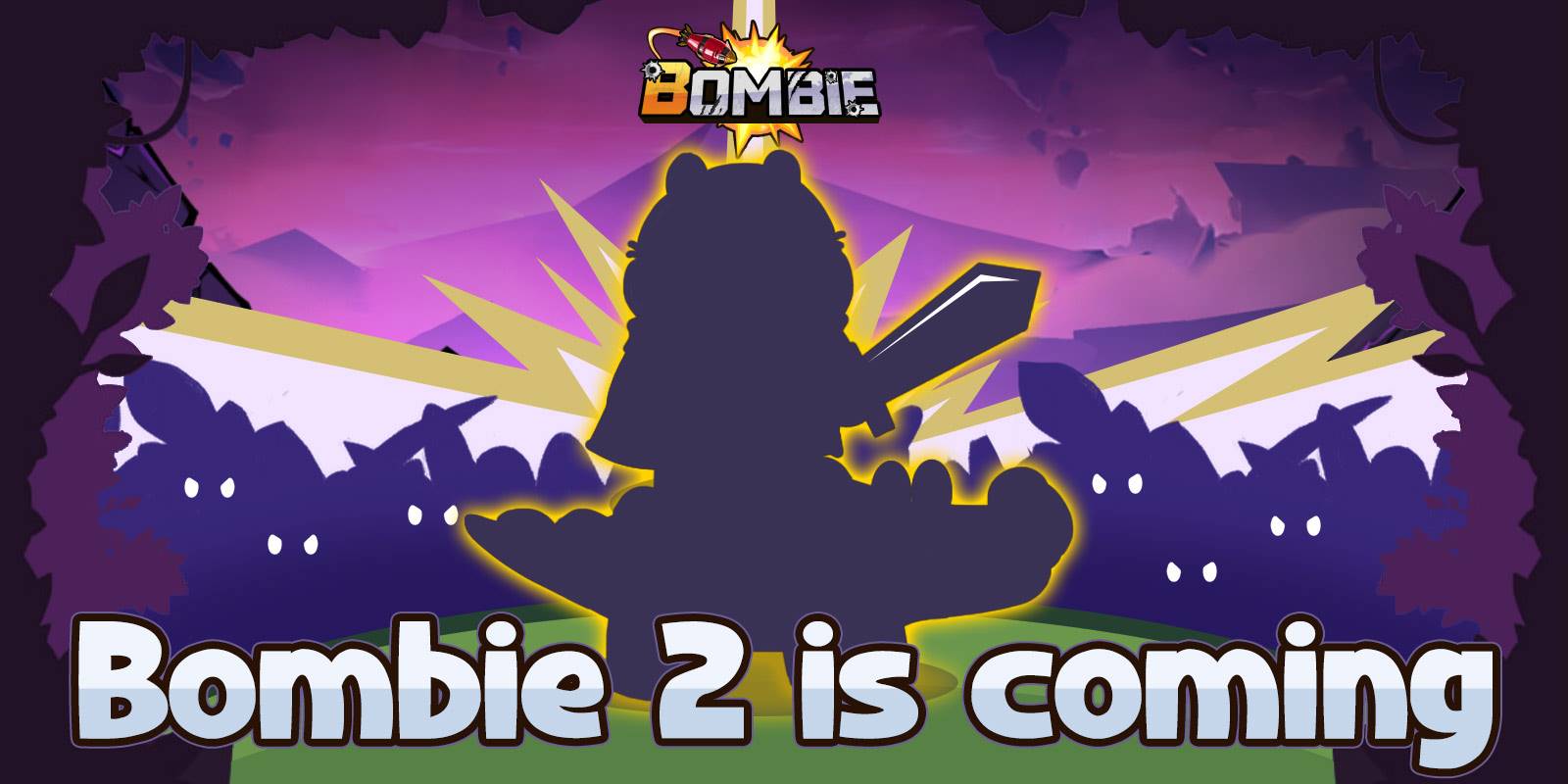
TGE Countdown, Bringing True "Fair Launch"
Deep Tide TechFlow: The WeChat mini-game ecosystem has seen a surge of hits, providing valuable experience and endless inspiration for many Web3 mini-game teams. Starting with CapyBomb, will Bombie launch more mini-game products in the future?
Barry:
Indeed, the success of the WeChat mini-game ecosystem has provided many valuable references for Web3 mini-games, but for Bombie, our future focus will be more concentrated.
First, we will continue to deepen our existing games, such as Bombie and CapyBomb, constantly updating and optimizing gameplay content, reward systems, and user experiences to ensure that veteran players can continuously find freshness while also attracting new users to join.
Second, we plan to further expand the original IP of Bombie, extending Bombie's worldview and character settings into different types of new game genres, such as strategy, nurturing, or social interaction mini-games, allowing players to experience a unified yet rich Bombie ecosystem across different experiences.
At the same time, we will actively promote collaborations with other well-known IPs, leveraging existing social platform foundations, such as Telegram and LINE, to create a larger-scale, more interconnected Web3 gaming ecosystem, continuously enriching content layers and enhancing player engagement and ecological activity.
Overall, the future development of the Bombie ecosystem is not simply about pursuing quantity but about creating a truly sustainable, long-term Web3 lightweight gaming system with continuously growing user value through meticulous content refinement, expanding IP influence, and multi-IP collaborations.
Deep Tide TechFlow: Whether it's the original album "Bombie Rise" or the animated series "Fake Elon," Bombie frequently explores IP integration. What will these explorations bring to gamers? Will Bombie have more initiatives in gradually building a multi-dimensional IP ecosystem in the future?
Barry:
Indeed, whether it's the original album "Bombie Rise" or the animated series "Fake Elon," Bombie's exploration of IP integration and content diversification is part of our long-term strategy.
Our goal is to not only keep Bombie within the gaming scene but also extend Bombie's IP into broader cultural content areas through music, animation, comics, and other forms, reaching more users from different circles. These explorations can help us make Bombie's worldview, character stories, and brand image more three-dimensional and tangible, allowing players and users to maintain an emotional connection with Bombie outside of the game.
In the future, in the gaming field, we will develop more different types of new game series around the Bombie IP, while also actively collaborating with other well-known IPs to create a rich, interconnected cross-game ecosystem.
In the content field, we will continue to increase our investment in music, animation, social media content, and other directions, shaping Bombie into a truly influential and long-term valuable Web3 native IP through multi-dimensional, lightweight content products.
In short, Bombie will not remain confined to the game itself. We hope to continuously innovate and explore cross-border opportunities to expand the value of the IP while enhancing players' and users' emotional recognition and sense of belonging to the Bombie brand.
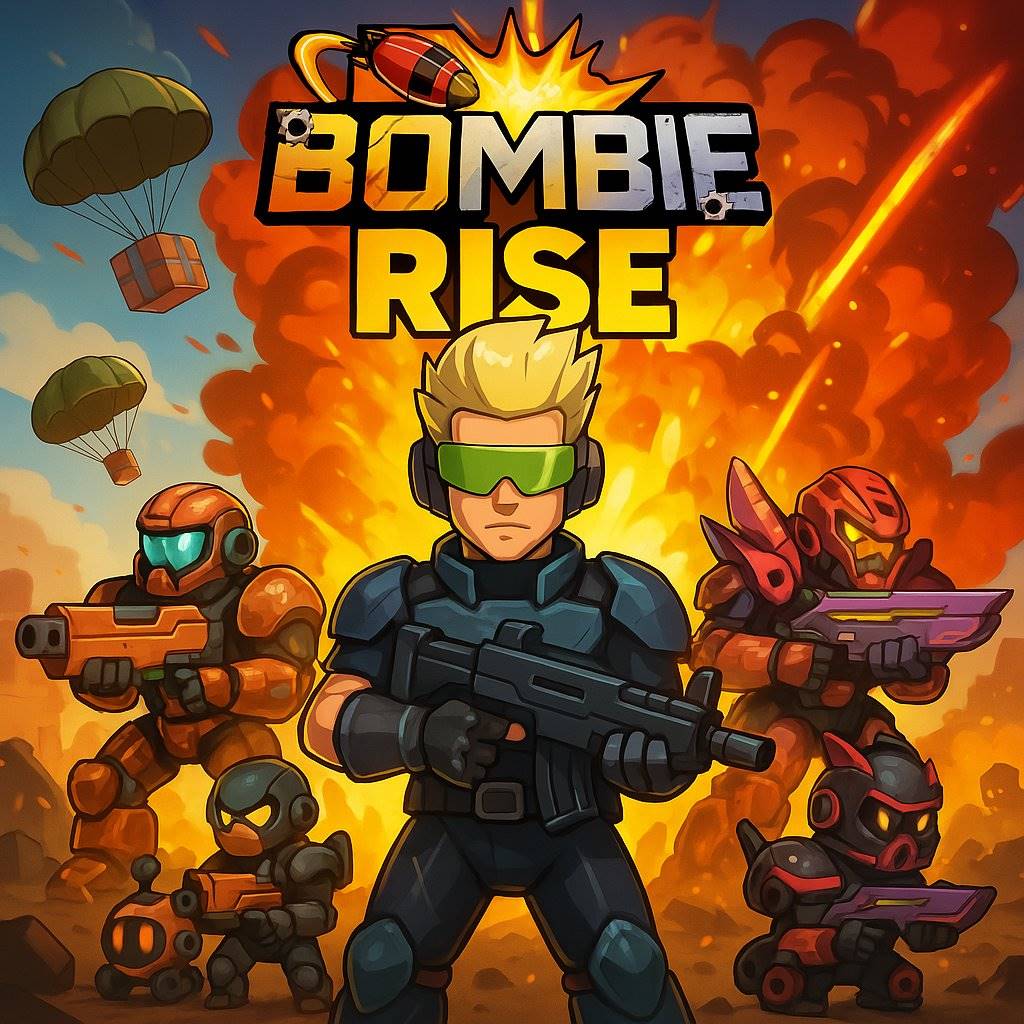
Deep Tide TechFlow: According to sources cited by Fortune magazine, Trump is working with business partners to prepare a real estate-themed crypto game centered around his brand, with gameplay similar to "Monopoly Go!" If this news is true, how do you view Trump's entry into the blockchain gaming space?
Barry:
If this news is true, I believe that from an industry perspective, Trump's entry into the blockchain gaming market, especially with a focus on real estate themes, is a very symbolic event.
First, this represents that blockchain gaming (Web3 Gaming) is gradually expanding from the pure crypto circle into broader mainstream business and entertainment fields. Regardless of the ultimate success of the project, the mere involvement of such a heavyweight public figure and brand can significantly raise public awareness and attention towards blockchain gaming and even the entire Web3 ecosystem.
Secondly, from a product perspective, if it is based on familiar, lightweight, and socially shareable gameplay like "Monopoly Go!" combined with blockchain asset mechanisms, it aligns very well with the current trend of Web3 games moving towards lightweight, low-threshold, and large-scale dissemination. Blockchain games are no longer just a niche circle focused on complex financial models but are increasingly becoming entertainment products that ordinary players can understand and participate in.
Of course, the real challenge lies in how to convert brand influence into long-term user retention. Web3 games ultimately need to return to the experience and value itself. Brand effects can bring initial traffic, but whether they can retain players depends on the health and sustainability of gameplay design and economic models.
From the perspective of the Bombie team, we actually welcome more external forces to enter the blockchain gaming market because it means that the entire industry's user base and imaginative space will be further opened up. Our own strategy will also insist on combining game experience with Web3 value design to truly create sustainable and enjoyable products for players.
Deep Tide TechFlow: According to CoinGecko data, there are currently no gaming tokens among the top 100 cryptocurrencies by market capitalization. This phenomenon has recently sparked widespread discussion in the community about whether "Web3 gaming is a false proposition." How do you view this discussion?
Barry:
I believe that this phenomenon indeed reflects some phase challenges in the current Web3 gaming sector, but it cannot simply lead to the conclusion that "Web3 gaming is a false proposition."
First, in the short term, the decline of gaming tokens on the market capitalization leaderboard is more due to the fact that many past Web3 gaming projects overly emphasized financial attributes in their design, neglecting the core aspect of "playability," resulting in insufficient user retention and ecological stability. In the context of liquidity decline and tightening macro conditions, the market's demand for the real value of projects has increased, and this kind of elimination is actually healthy.
However, in the long term, the combination of gaming and blockchain technology still has extremely strong logical support. In the traditional gaming industry, players have never truly owned assets; whereas Web3 can bring on-chain asset rights confirmation, open economic systems, and cross-game interoperability experiences, all of which can provide substantial value enhancement for players. The industry still needs more solid refinement and time in exploring these paths.
Taking Bombie as an example, we insist on first providing a good gaming experience, treating Web3 elements as value supplements rather than overturning the original entertainment experience. This approach, which prioritizes "fun" and then naturally integrates asset attributes, I believe is the true path that can transcend cycles and move towards the mainstream.
Therefore, I personally tend to believe that Web3 gaming is currently in an early trial-and-error and structural adjustment phase, rather than being a false proposition. Truly excellent content-driven Web3 games will demonstrate stronger vitality in the next round of industry upgrades.
Deep Tide TechFlow: The Bombie TGE is approaching. Can you share more specific information with players?
Barry:
Regarding Bombie's TGE, what we can share at this time is:
The BOMBIE token $BOMB is a true "Fair Launch" project. In the overall token distribution, 70% will be directly distributed to players who genuinely participate in the game and contribute to rankings through airdrops, rather than being reserved for early private placements or presales, which maximizes the fairness of the ecosystem and user incentives.
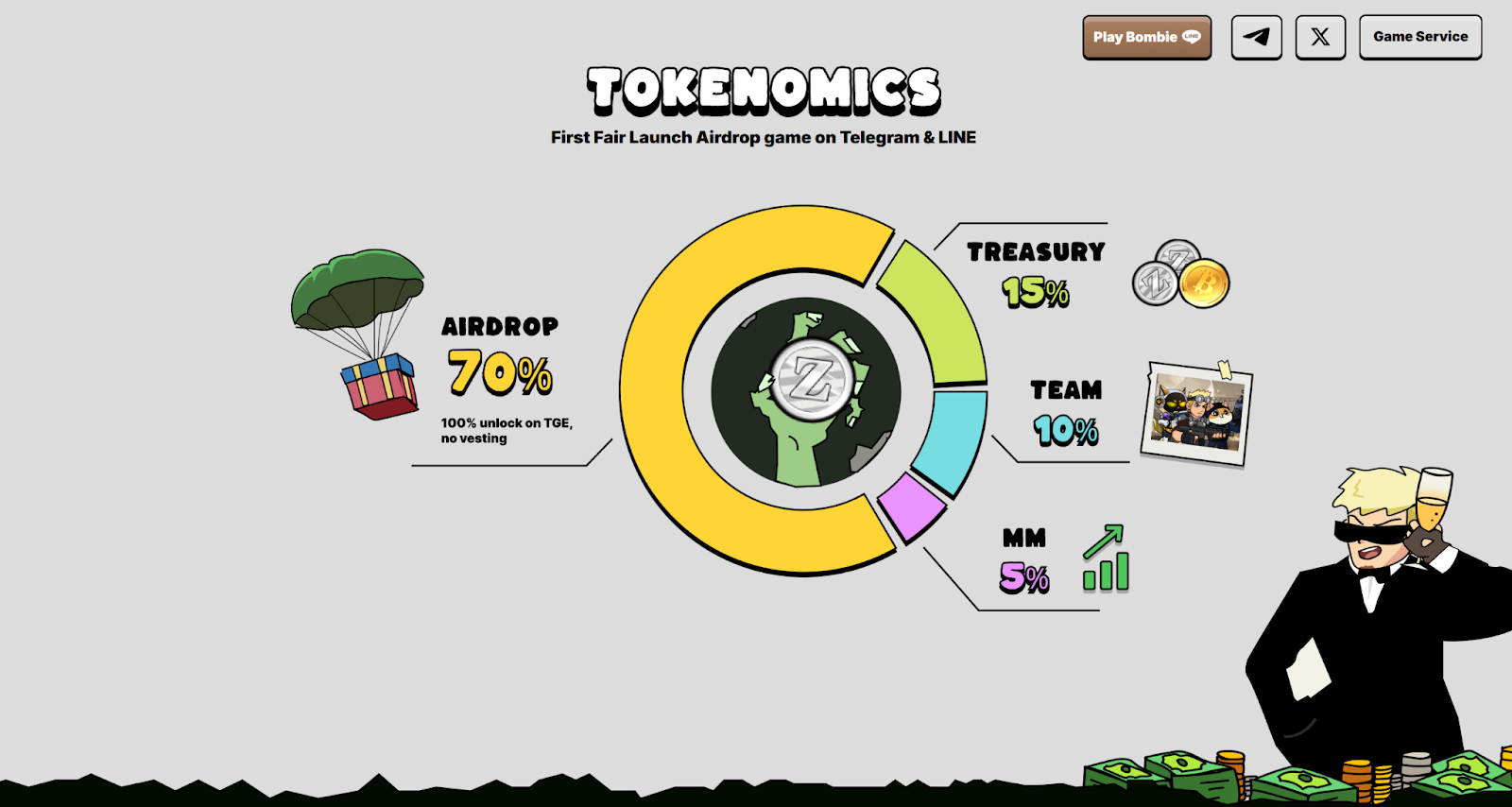
The timing of the TGE is also very close to the official launch; it is not something that will happen months later, but rather "on a weekly schedule." We hope to allow players to truly own their $BOMB token assets as soon as possible through this relatively fast and transparent TGE process. For specific listing information, airdrop details, and event arrangements, please continue to follow Bombie's official announcements, and we will keep you updated with the latest developments!
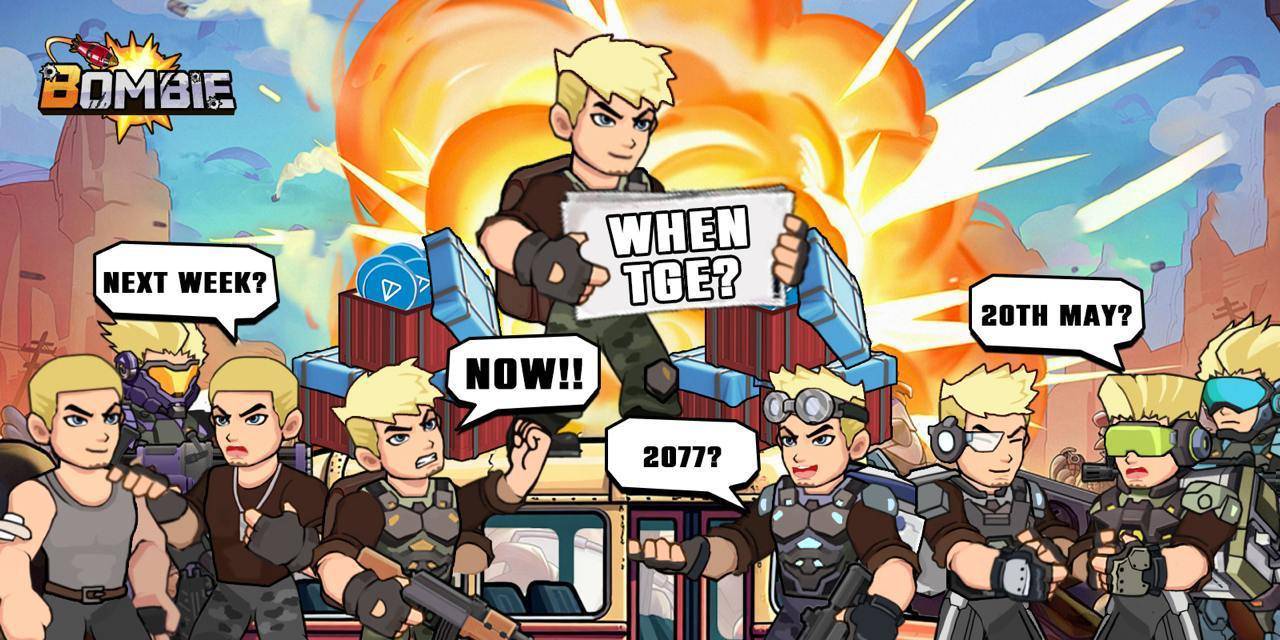
免责声明:本文章仅代表作者个人观点,不代表本平台的立场和观点。本文章仅供信息分享,不构成对任何人的任何投资建议。用户与作者之间的任何争议,与本平台无关。如网页中刊载的文章或图片涉及侵权,请提供相关的权利证明和身份证明发送邮件到support@aicoin.com,本平台相关工作人员将会进行核查。




